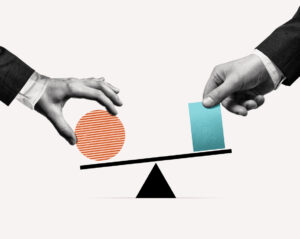Can we talk about the meaning of ‘green’ for a second? With the promise of springtime beginning to sprout across the Northern Hemisphere, we’re beginning our ‘Color Theory’ mini-series honing in on the deeper meanings of around the use of color in branding. We begin with the color ‘green’, what it means to people at a glance and how this color can reflect a brand’s identity.
Green is not just a color produced from mixing the radiance of yellow and the calmness of blue; it is a cultural chameleon, a psychological trigger and, when applied to the relevant spaces, a brand powerhouse. This color screams messages of nature, of wealth and has spoken to the themes of renewal and rebirth within many cultures for centuries. Have you ever wondered about how this color may play into your brand strategy? It could be the perfect fit for you, but to know for sure we need to get deeper into the psychology of ‘green’ within color theory.
The Psychology of Green | It’s So Much More Than Nature
As a color, ‘green’ is the MVP of balance. Sitting right in the middle of the color spectrum, it is easy on the eyes and immediately sparks connotations of health, wellness and balance. This is why food and beverage brands (like Wholefoods), sustainable brands (like The Body Shop) and tech (like Spotify) have green at the very heart of their brand visual communications, and places this color at the forefront of your eyes. Green is calming, reassuring and evokes stability. Green immediately makes a brand’s core consumer think, ‘This is healthy for me!’, which is why it ties in beautifully with those example industries.
While this color says, “Relax, we’ve got you covered”, don’t let this chilled energy fool you. Green is also deeply tied to ambition, prosperity and growth. Consider this…from our US Dollars, to being the universal sign for ‘go’ on traffic lights, to the business term of being ‘in the green’ when it’s thriving, everyone wants a taste of that success – and that’s exactly what brands who use this color as a part of their identity provide to their consumer. Who doesn’t want a slice of health and wealth?
We’ve only just scratched the surface here, as the different shades of green send different messages themselves. Dark, rich tones send clear messages of sophistication and luxury. Muted olive? Grounded, organic and eco-mindful. The shade you pick is not solely about aesthetics, but you and your brand’s intention.
Green Across Cultures
Green may feel universal, however, its meaning shifts depending on where you are in the world. Within Western cultures, the color is synonymous with nature, rebirth, growth – and sometimes people can even be ‘green with envy’. Of course for the Irish, green is…well, it’s everything! With green at the core of their heritage, folklore and national pride are rolled into one. Ever heard of ‘the luck of the Irish?’ This message, you’ll find, is typically teamed with visuals of green shamrocks, green accents in clothing…the works!
Looking to the Far East, green can be used to symbolize good fortune, purity and a healthy way of living; suitably fitting into the use of green in health and wellness industries we explored earlier. Green really is a color without borders, with its messaging and psychological understanding being truly cross-cultural.
Branding Green | Who is Doing It Right?
Looking to brands who harness the power of green, we can see the reasons behind their choice of brand color; whether it’s down to industry type or the products they sell, choosing ‘green’ (or any color, in fact) it is never a coincidence, but rather showing the world who they are and instilling a certain feeling within their customers.
The deep green of the Whole Foods logo reinforces their commitment to sourcing and selling organic produce and contributing to the sustainable lifestyle of their ideal consumer. Every single aspect of their branding, from store signage to reusable tote bags, leans into green’s association with health and making eco-conscious choices. Setting the visual cue to consumers that says, “You’re making a smart and responsible decision shopping here.”
Then, we have the likes of global giant, Starbucks. Green not only ties into their Seattle heritage (hello, evergreen trees), but also provides a sense of reliability and moment of calm within the caffeinated chaos. Their iconic green siren is globally recognized, giving consumers a psychological nod to the idea of a ‘home away from home’ or this ‘third place’ between home and the office. Not only that, but green certainly sets them apart from their competitors who lean into more red or brown hues, giving their brand a competitive edge from the moment our eyes land on their signs.
Green appears in all manner of industries. Once upon a time, we may not have expected to see the likes of a tech giant owning green within their brand colors. However, Spotify chose to lean into the color by opting for a vibrant green logo and accents of the same shade occupying key spaces in their platform’s interface. Instantly, their use of green sets them apart from the oftentimes ‘clinical’ blues and gray hues of other tech/social media applications, they leaned into the fact that they were bringing something new to the table with their service by making this unexpected, yet powerful choice.
With these success stories in mind, and understanding what your brand stands for, could green be your new best friend?
Is your brand green with envy? Let’s give it a refresh!
Choosing the right color palette for your brand is all about identifying what feels right, what resonates with your audience and what aligns best with your brand’s mission.
If it’s time to rework or renew your brand colors into something more ‘you’, let’s chat! Reach out to us today and we’ll work on something bold, balanced and brilliantly you, together.



